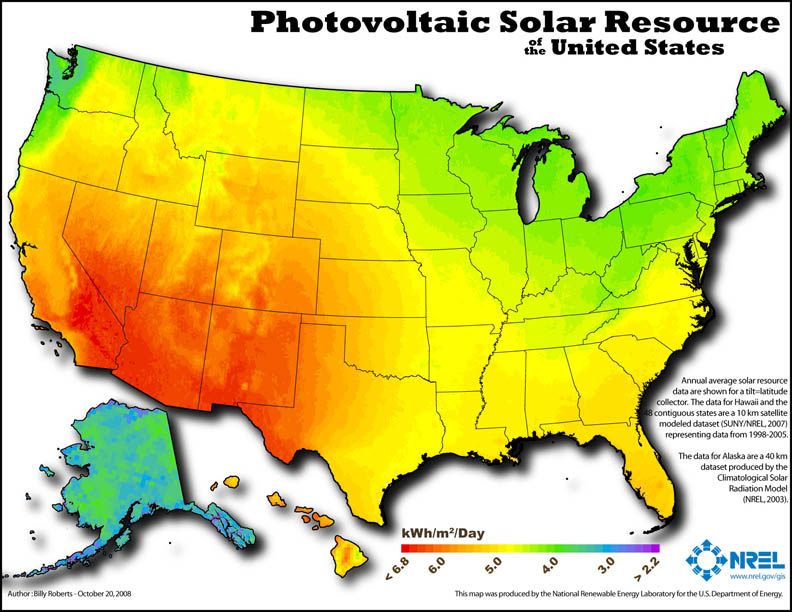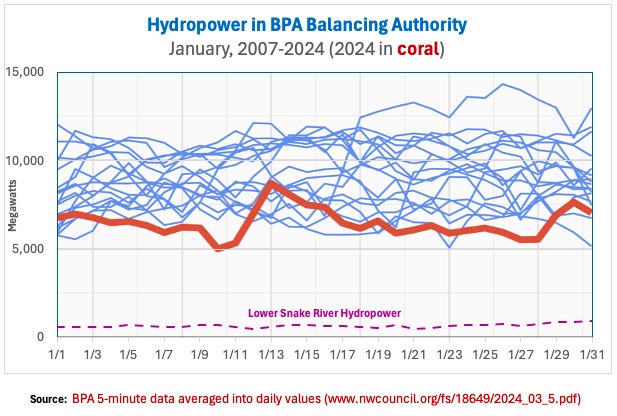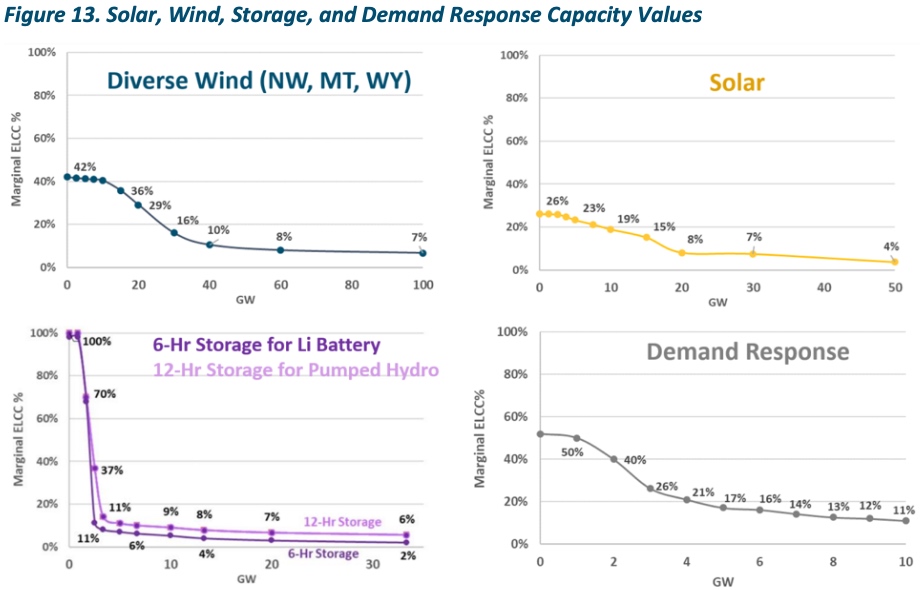forum
library
tutorial
contact

E3 Responds to Renewable NW
Op-Ed on LSRD Power Study
by Arne Olson and Aaron Burdick
Clearing Up, August 5, 2022
|
the film forum library tutorial contact |

|
E3 Responds to Renewable NW
by Arne Olson and Aaron Burdick
|
Op-ed criticizes E3's modeling for "not fully capturing
the value of existing renewables and battery storage..."
 Renewable Northwest's column in the July 22 issue of Clearing Up criticizes Energy and Environmental Economics' "BPA Lower Snake River Dams Power Replacement Study," which was prepared on behalf of BPA. The op-ed criticizes E3's modeling for "not fully capturing the value of existing renewables and battery storage" and not accounting for the impact of climate change on hydropower and load. Unfortunately, the op-ed is simplistic and disappointingly betrays a lack of understanding of the dynamics of deeply decarbonized and highly renewable power systems.
Renewable Northwest's column in the July 22 issue of Clearing Up criticizes Energy and Environmental Economics' "BPA Lower Snake River Dams Power Replacement Study," which was prepared on behalf of BPA. The op-ed criticizes E3's modeling for "not fully capturing the value of existing renewables and battery storage" and not accounting for the impact of climate change on hydropower and load. Unfortunately, the op-ed is simplistic and disappointingly betrays a lack of understanding of the dynamics of deeply decarbonized and highly renewable power systems.
It is true that the power output of the four lower Snake River dams could readily be replaced with a combination of wind, solar and battery storage -- along with demand-side resources -- under today's electricity market conditions and if removal of the dams was the region's only policy objective. A study prepared by Energy Strategies earlier this year for the NW Energy Coalition essentially models this scenario, finding replacement costs of $277 million-$309 million per year or $8 billion-$9 billion net present value (albeit replacing only a portion of the dams' firm capacity).
By contrast, E3's study considers the resources needed to replace the dams while also reducing carbon emissions to zero or near zero by 2045, finding replacement costs of $450 million-$800 million per year or $12 billion-$19 billion NPV. On these future power systems, the ability of wind and solar to contribute to resource adequacy, even when augmented with diurnal energy storage, is significantly diminished due to saturation. In fact, study after study has found that some form of "clean firm" generation -- carbon-free generation that can run whenever needed -- is necessary to achieve carbon-emissions reductions beyond approximately 80 percent due to the limitations of variable renewables and short-duration storage.
E3's study assumes that hydrogen-capable combustion turbines are available to fill this "clean firm" role in most scenarios. Other options are advanced nuclear, fossil generation with carbon capture and long-duration energy storage. These emerging technologies dramatically reduce the cost of achieving deep decarbonization relative to scenarios without them. They also reduce the cost of replacing the lower Snake River dams, which requires replacing both the dams' carbon-free energy and their firm capacity contributions. E3's study not only fully captures the value of wind, solar and storage, but optimistically assumes additional resources are available to complement them -- resources that are not commercially available today. The scenario that did not allow any "clean firm" resources resulted in an unrealistically large renewable and battery build-out -- and an astronomical cost for replacing the lower Snake River dams.
 The electricity sector's twin tasks of serving load reliably and reducing carbon emissions are intensified when considering electricity's role in achieving economywide decarbonization. Extensive electrification of transportation and building-sector loads -- called for in every deep-decarbonization pathways study, including Washington's 2021 State Energy Strategy -- will significantly increase peak electricity demands, particularly during winter cold spells when much of the heating demand is currently met by natural gas.
The electricity sector's twin tasks of serving load reliably and reducing carbon emissions are intensified when considering electricity's role in achieving economywide decarbonization. Extensive electrification of transportation and building-sector loads -- called for in every deep-decarbonization pathways study, including Washington's 2021 State Energy Strategy -- will significantly increase peak electricity demands, particularly during winter cold spells when much of the heating demand is currently met by natural gas.
While a warming climate, diminishing snowpack and deteriorating load-resource balance will almost certainly lead to summertime reliability challenges in the Northwest over the next decade, meeting wintertime electric heating demands will be the largest reliability issue in the long run, even for southern systems such as California and Texas.
Maintaining resource adequacy in the Pacific Northwest will require fully replacing the lower Snake River dams' wintertime peaking capabilities. The Renewable Northwest op-ed disappointingly does not mention electrification or appear to consider its impact on regional electric loads.
Specific Responses to Renewable Northwest Op-Ed
Beyond these general remarks, specific responses are warranted in a few areas:

(bluefish notes: E3 is avoiding the point here, that batteries in their model are unjustifiably given a VERY poor ELCC curve (see page 41 of study). This was Renewable Northwest's concern, and not addressed by this response.)Because E3's study is optimizing replacement resources on a system with zero or near zero carbon emissions, the baseline system includes tens of thousands of megawatts of wind and solar resources. The marginal capacity contribution from adding even more wind and solar to replace the output of the lower Snake River dams is very small, hence RESOLVE finds it more cost-effective to add hydrogen-capable combustion turbines, which are very effective at providing firm capacity even though their dispatch costs are high.
learn more on topics covered in the film
see the video
read the script
learn the songs
discussion forum
